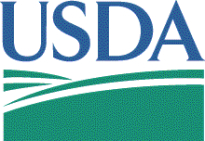The U.S. Department of Agriculture’s Food Safety and Inspection service (FSIS) regulates meat, poultry, and egg products. That agency evaluated outbreaks associated with meat and poultry through fiscal years 2007 through 2012 to see how many were linked to FSIS-regulated products and which pathogens caused the most outbreaks.
 Differences in outbreaks from 2007 through 2009 and from 2010 through 2012 were assessed. Of the 163 reported outbreaks used in this analysis, 89, or 55%, were identified as possibly linked to FSIS-regulated products, and 74, or 45%, were definitely linked to FSIS-regulated products. These products were associated with 4,132 illnesses, 772 hospitalizations, and 19 deaths.
Differences in outbreaks from 2007 through 2009 and from 2010 through 2012 were assessed. Of the 163 reported outbreaks used in this analysis, 89, or 55%, were identified as possibly linked to FSIS-regulated products, and 74, or 45%, were definitely linked to FSIS-regulated products. These products were associated with 4,132 illnesses, 772 hospitalizations, and 19 deaths.
Shiga toxin-producing E. coli bacteria was associated with 55% of these outbreaks, followed by Salmonella (34%), and Listeria monocytogenes (7%). Meat and poultry products commercially served as raw were linked to 77% of the outbreaks, and of these, 80% involved beef.
The good news is that over the period studied, the number of reported outbreaks definitely linked to FSIS-regulated products declined. But the proportion of culture-confirmed cases increased, which could be attributed to PulseNet and better reporting.
Food Poisoning Bulletin has reported on quite a few E. coli outbreaks linked to beef in the past few years, and a number of recalls of beef products for E. coli contamination. A deadly E. coli outbreak in 2014 was linked to grass-fed ground beef sold at Whole Foods Market in Massachusetts. And an E. coli outbreak in Texas in 2013 was linked to ground beef served at a Brazos County restaurant.
Also in 2014, a multistate E. coli outbreak was linked to Wolverine Packing Company ground beef. The ground beef in those illnesses was sold at restaurants. Twelve people in four states were sickened in that outbreak.
The symptoms of an E. coli infection include severe abdominal cramps, diarrhea that may be bloody and/or watery, nausea, vomiting, and a mild fever. In certain people, especially young children, this infection can develop into hemolytic uremic syndrome (HUS), a life-threatening complication. The symptoms of HUS include little or no urine output, pale skin, lethargy, easy bruising, a skin rash, and bleeding from the nose or mouth.
If anyone is experiencing these symptoms, they should see a doctor immediately. E. coli and HUS infections can cause kidney failure, strokes, and death.




